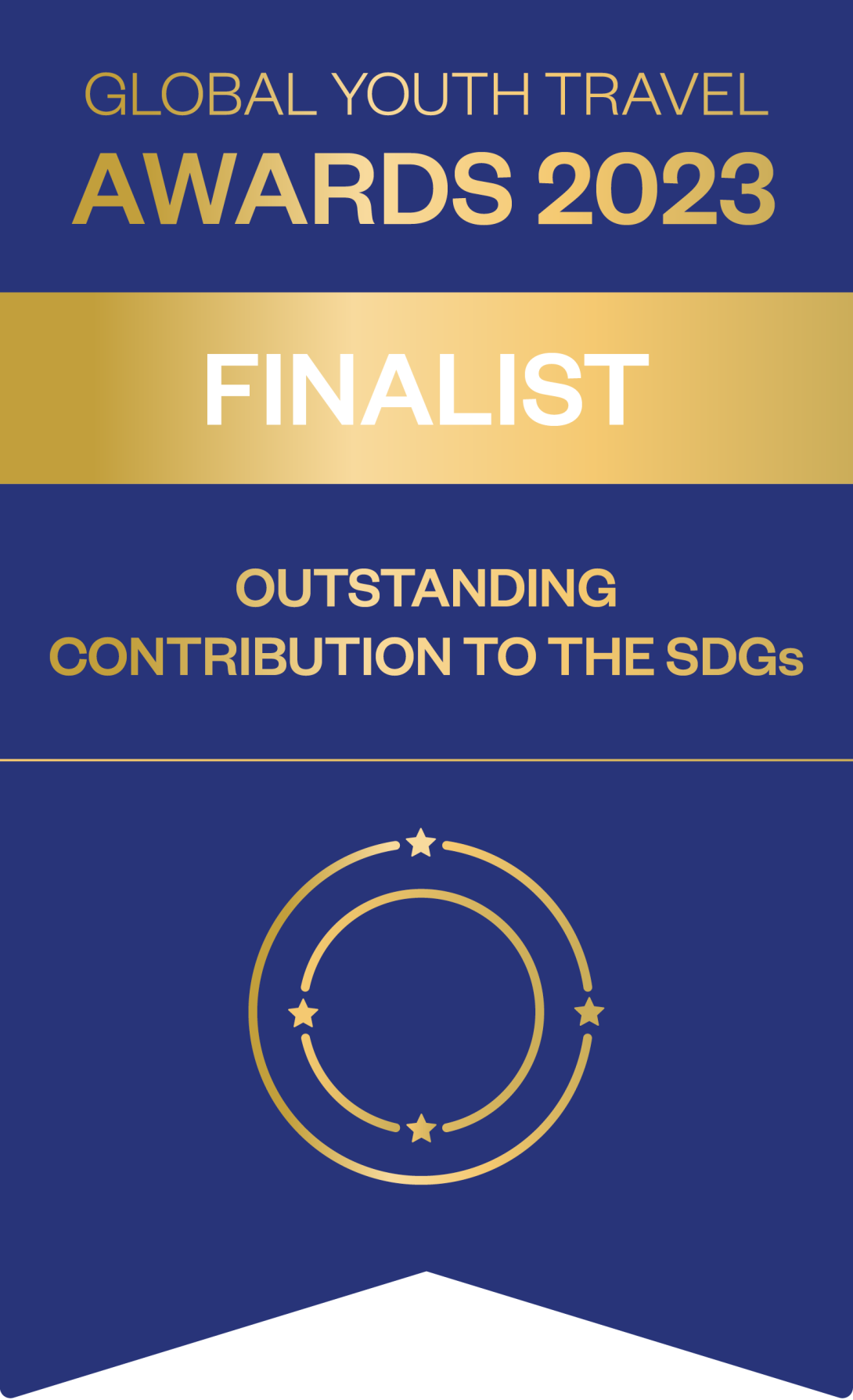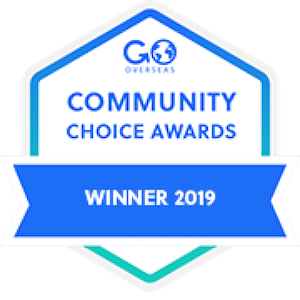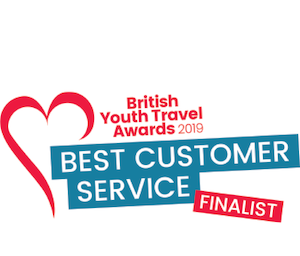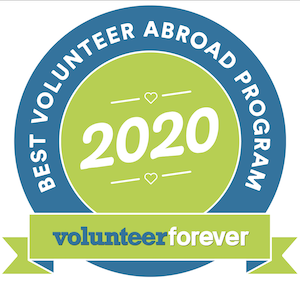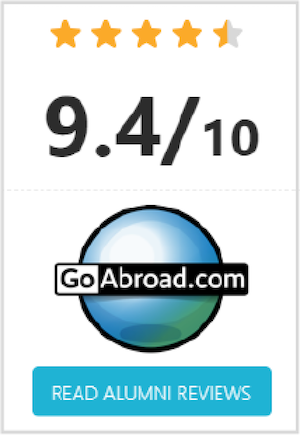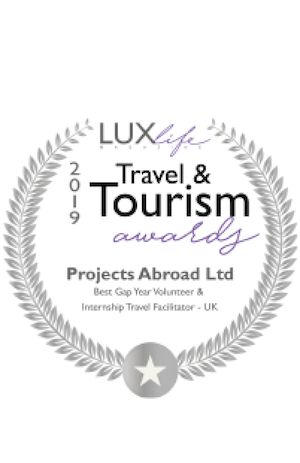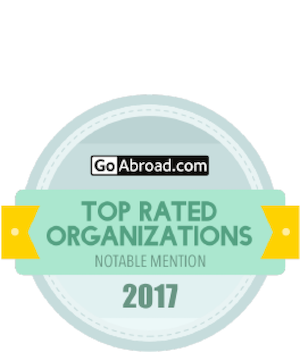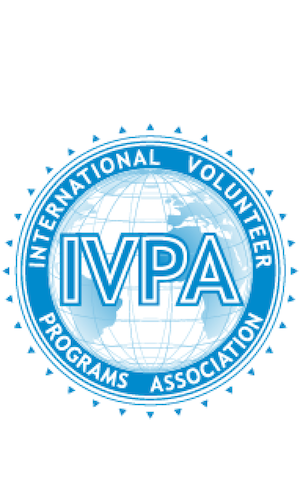At a glance
- Get Started: Download this trip's itinerary
- Live with a group of students in the Amazon Rainforest, engaging with the local environment and protecting endangered animals on a daily basis.
- Experience different areas of work from conservation efforts in the exclusive Galapagos National Park to supporting eager students in their quest to master communication skills.
- Give your Spanish skills a major lift by fully immersing yourself in Spanish-speaking countries for 8 weeks.
- Watch the sunrise over the stunning landscape and ruins of Machu Picchu.
- Participate in community enrichment projects with a group in Cusco and work together to achieve a specific goal in a short time.
What projects will I work on?
Peru:
- 2 weeks Conservation work in the Amazon Rainforest
- Visit Machu Picchu
- 2 weeks Community Outreach work around Cusco and the Sacred Valley
Ecuador - Galapagos Islands:
- 2 weeks Giant Tortoise and Sea Lion Conservation
- Weekend trip to Santa Cruz
- 2 weeks Teaching and Community Work
While most of these projects focus on volunteering, we can facilitate internships during your Gap Project if you need to fulfil requirements for your university.
Peru:
Join our staff in Cusco, Peru. For the first two weeks, you’ll have daily Spanish lessons and tours of the local sights. At the same time, you'll join community events to teach and care for disadvantaged families. You can help with renovation work for classrooms and local facilities.
After two weeks, visit the magnificent lost city of Machu Picchu! After several days of hiking and exploring ruins, your group will travel to the Amazon Rainforest.
You'll travel to Puerto Maldonado. From here, take a boat ride deep into the Amazon Rainforest, where you will live and work at the Taricaya Conservation Project. Care for animals, support their release programme and help with farming and maintenance. You'll also conduct research and collect turtle eggs from riverbanks.
Your Conservation work in the Amazon Rainforest will focus on:
Data Collection
By observing and recording details about the species you see during surveys, you’ll help us better understand how to protect them. This type of work can include:
- Bird censuses conducted from a canopy platform
- Collecting video footage using camera traps
- Recording data on species characteristics during trail hikes
With the help of your work, we produce a technical report every year to demonstrate our environmental impact. The data for these reports comes directly from our volunteers’ daily observations. Thanks to this work, Taricaya is increasingly recognized internationally as a research center. It has contributed a number of important research papers at international conferences, especially in the field of ornithology.
Animal Release Programme
At Taricaya, we run an animal release programme. This work involves our project partner, Animal Defenders International (ADI). ADI confiscates illegal pets or circus animals, including Amazon rainforest monkeys. We then rehabilitate these rainforest animals at the rescue centre, and release them into the wild if possible. These are usually endangered species like scarlet macaws, whose populations are steadily decreasing in the Amazon.
You’ll help with feeding these animals and doing general maintenance. This includes tasks like cleaning enclosures or repairing fences. Although this may sound like menial work, it’s a chance to get up close to beautiful wildlife, while also helping prepare them for a life of freedom. For animals raised in captivity who can’t be released, you’ll be helping to give them the quality of life they deserve.
Breeding Programme
You’ll also help with our turtle breeding programme and do things like patrolling riverbanks for turtle nests, collecting the eggs, and incubating them at the centre. This protects them from poachers. When the eggs hatch, watching hatchlings scurry across the sand making their way to water is a heart-warming moment! It also makes a huge impact on the populations of these species in the wild.
You’ll also help with catching and breeding endangered butterflies. Our butterfly-catching methods are completely safe and leave the butterflies unharmed. We can then house them in optimal conditions for our rainforest animal research, help them breed, and study their behaviour.
Pilot Farm
We have a pilot farm where we work on developing and perfecting sustainable farming techniques. We then teach local people about sustainable farming to reduce the negative impact of farming in the area. Your role is to tend the crops and help us raise awareness about sustainable farming. Sustainable farming will make Amazon Rainforest reforestation much easier.
We also run a mahogany programme. We grow mahogany trees close together and study them. This particular Rainforest habitat project shows local loggers that this is a cost-effective alternative to cutting down trees from the rainforest. We are also able to share the timber from these trees to use in production. You will help with maintaining the plantation and taking measurements.
Raise Awareness
We work to raise awareness about conservation on both a local and a global level. Through research and publications, Taricaya provides groundbreaking data that draws attention to the work we’re doing in the Amazon rainforest and its ecosystems. You’ll be involved in collecting this data and contributing to large-scale research work.
You can also help with raising awareness about conservation in local communities. For example, you could run a recycling competition in a local school. Or you could conduct a workshop on the small things people can do to combat climate change.
Learn more about our Animal Rehab in the Amazon Rainforest
Galapagos Islands:
You'll fly to San Cristobal and support the Giant Tortoise and Sea Lion Conservation project in this unique location. Our partnership with the Galapagos National Park gives us exclusive access to the wilderness Darwin once studied. The work is hands-on, with the added benefit of learning from expert conservationists. You’ll do things like:
- Monitor and survey wildlife, including Giant Tortoises at a breeding center, and sea lions and birds out in the wild
- Help control invasive animal species that threaten the Indigenous wildlife, which is critical for environmental stability
- Eradicate alien plant species and help local plants thrive
- Support the community by participating in beach clean-ups and raising awareness of how people can protect animals and the environment
During your final two weeks here, you'll also have the chance to volunteer with children on the island. Help children learn through play, run educational games and teach English. You can also work with small groups of kids in the community for sports coaching.
Childcare
The biggest focus of our Childcare Project in Ecuador is ensuring that young kids learn the skills they need to thrive once they start school. We work in overcrowded and understaffed kindergartens, giving teachers extra support in the classroom. In addition to teaching Early Childhood Development, our volunteers also teach basic English and encourage the kids to practice good hygiene.
Children learn through play, so you can do things like:
- Plan and run educational activities, games, and arts and crafts
- Teach songs and rhymes so kids can practice and remember the English they learn
You don’t need previous experience working with kids, we’ll provide training, workshops, and resources so you’ll have everything you need to do the work.
Read more about supporting Early Childhood Development in Ecuador.
Teaching & Sports Coaching
On your Gap Project abroad in the Galapagos Islands, you’ll be able to add real classroom and sports coaching work experience to your resume. If you’re thinking about pursuing a career as a teacher, this is a great way to test the waters before putting in the time and effort to qualify to teach.
Our Teaching Project has a lot of variety. A big part of your experience will be teaching English to school kids, but you can also participate in a programme where you teach adults.
Sports coaching takes place at a community sports club, and you can teach sports like soccer and basketball, and do activities like Zumba. You’ll work with small groups of kids.
Read more about Teaching and Sports Coaching in Ecuador.
Where in Peru and the Galapagos will I work?
San Cristobal
In the Peruvian Amazon Rainforest
You’ll live and work at the central camp at Taricaya Ecological Reserve, which is located in the Amazon Rainforest. The camp is a one-hour boat ride from the nearest town, Puerto Maldonado, situated in southeast Peru near the border with Bolivia. Most of the work that you’ll do is based in and around the camp, and within the Taricaya Ecological Reserve.
In Cusco, Peru
You'll be based in the bustling city of Cusco. Cusco was once the capital of the ancient Incan Empire. You'll see countless reminders of this as you walk through the city today.
In the Galapagos Islands (Ecuador)
You’ll live and work with your group on the island of San Cristobal. It forms part of the Galapagos archipelago, located about 1,000km from mainland Ecuador in the Pacific Ocean.
Even though it is the capital of Ecuador’s Galapagos province, Puerto Baquerizo Moreno is still more of a port town than a city. It’s home to several pristine white beaches, but only two are for people. The others are all devoted to the protection of the local sea lion population.
Why do a Gap Project?
What you do in a Gap Project is completely up to you! Travel is a popular option for any student looking to:
- Add global experience to their CVs
- Live more independently
- Experience cultural exchange
If a full gap year feels like a tall order right now, a Gap Project might be just what you need. With the right organisation supporting you, and a flexible programme built around experiential education, a Gap Project can be equally fulfilling and productive. Throw travel into the mix, and your Gap Project has the added benefit of exposing you to cultural exchange.
Everything is planned for you during our Gap Project abroad in South America, and our staff will be there for you whenever you need them. The programme covers a variety of areas, so you get to experience a bit of everything. This is hugely valuable for anyone who is still figuring out what they really want to do, and those looking to spice up their gap year with variety!
Food and Accommodation
In the Peruvian Amazon Rainforest
You'll share accommodation with other Gap Project participants during your stay at the Taricaya Ecological Reserve. This is a great way to get to know your fellow students, share experiences, and explore your surroundings in your free time together. Each bungalow sleeps two people and has a private bathroom.
In Cusco
You'll stay with a host family in Cusco. They will welcome you into their home, eager to share their customs and learn about your culture. We believe that this is the best way to immerse yourself in the culture of Peru and have a truly unique experience. You will live alongside one or two other participants of the same gender.
In San Cristobal
You'll share accommodation with other Gap Project participants at our Conservation Lodge near Galapagos National Park during your stay in San Cristobal.
In all three locations
Your lodgings will be safe, clean and comfortable and you’ll receive three meals a day. Find out more about our accommodation.
Safety and staff support
Your safety and security is our prime concern. We have many procedures and systems to ensure you have the support you need to enjoy your trip with peace of mind. Our Projects Abroad staff are available 24 hours a day to help, and will be on hand to make sure you settle in well at your accommodation and placement. If you encounter any problems, they will be available to help at any time.
Find out more about safety and backup.
This placement is fully researched, safety audited, and risk assessed in accordance with the British Standard BS8848 for the Adventure Travel Sector.
Not quite what you’re looking for?
Take a look at the following pages where you'll find collections of similar projects:
Enquire Now
Our accreditations


